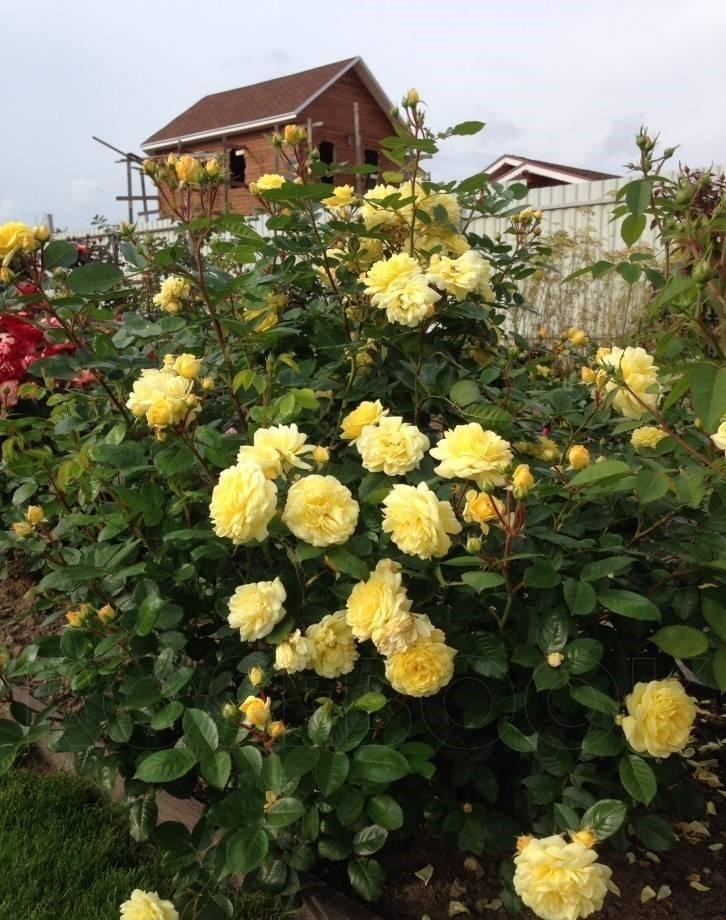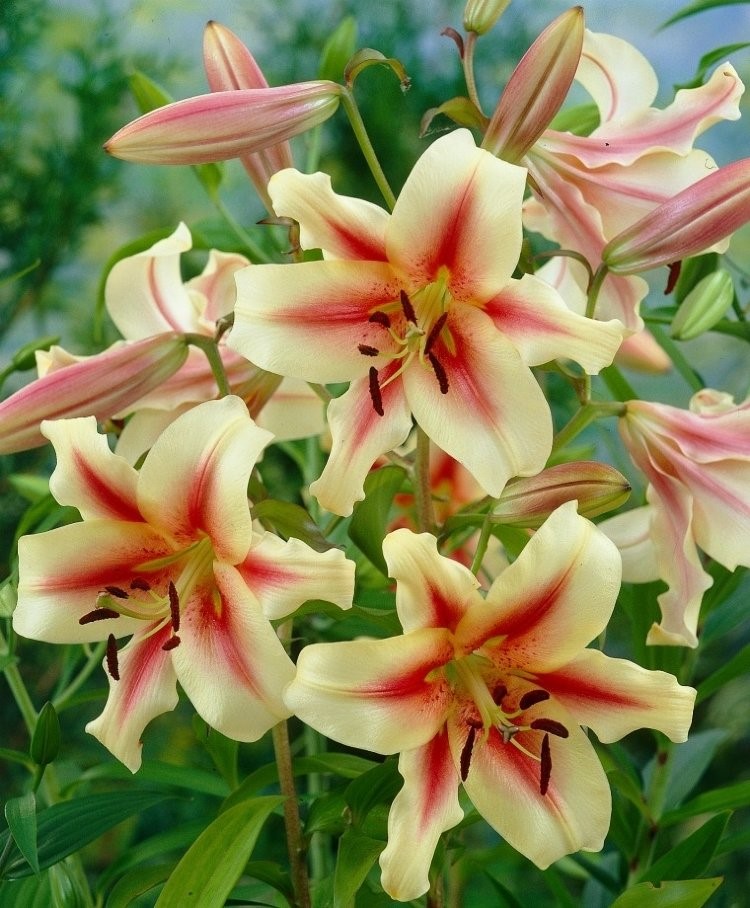Content
Among the garden plants there are many beautiful roses. But most of them are very capricious by nature and are not suitable for the average gardener. Rose Annie Duprey is an exception to this rule. Lemon coloring, neat arrangement of shoots, low requirements for cultivation are just a few of the advantages. To get acquainted with the plant, you need to refer to its description.
History of selection
Annie Duprey is a modern variety developed by the Meiland International nursery in 2006. French botanists have developed a fungus-resistant variety that, in addition, is not afraid of precipitation and moisture. The rose was named after the popular actress.
Description and characteristics of rose Annie Duprey
The culture belongs to the floribunda group. The park rose Annie Duperey originally had a different name - “Meitongas”, which later seemed inappropriate to scientists and was replaced by Anny Duperey.
2 years after the official presentation, the plant was awarded the ADR award for excellent immunity and noble appearance.

The bush reaches approximately 100 cm in height, sometimes more, has a width of 90 cm
The crop has large, glossy leaves that are evenly spaced over the stem area.
The culture has a symmetrical shape. Its main decoration – flowers – is clearly visible in the upper part. Their diameter ranges from 8 to 12 cm; the bud consists of a large number (more than 70) petals, closely touching each other. The flowers emit a subtle aroma and grow in groups of 12-14 pieces.
Flowering lasts from 2 to 3 months, depending on the climate. The buds open quickly, revealing their beauty to humans and pollinators. The light yellow air cloud attracts bees, butterflies and other beneficial insects.
Advantages and disadvantages
The rose on the Annie Duprey trunk is a universal variety. It is used for cutting and landscape decoration.

Rose Annie Duprey grows calmly in both sun and partial shade
Pros:
- unpretentiousness;
- weather resistance;
- strong immunity;
- frost resistance;
- re-blooming;
- no burns due to prolonged contact with sunlight.
Minuses:
- During the flowering period, the buds open prematurely due to precipitation.
Recommendations for cultivation
The variety is not recommended for planting in any particular region; it is cultivated everywhere. Rose Annie Duprey is often grown in the Moscow region, Krasnodar region, the Urals, Perm, Rostov and other areas.
Planting work is planned for mid to late spring. The determining factor when choosing a month is the weather. For example, gardeners in the middle zone start planting in the last days of April; in the south they do this 1-2 weeks earlier. Some people grow the Annie Duprey rose in the fall - in this case, you need to remain careful, since the cold should not interfere with rooting.
It is better to prepare a hole 10 cm deep and 60 cm in diameter in advance. A drainage element must be placed at the bottom, and organic matter on top. This could be compost, mullein or bird droppings.

The hole is filled with garden soil and the area is leveled.
While the fertilizer is being absorbed, they begin to process the rose itself. Annie Duprey is placed in a solution of heteroauxin or another stimulant. Follow the instructions provided; in the case of heteroauxin, it is kept for 24 hours.
In favorable weather, preferably dry and cloudy, planting begins. To do this, dig a hole again and place the prepared samples into it. Rose variety Annie Duprey is buried, trying not to damage the shoots. They need to be carefully spread to the sides. Botanists recommend leaving the root collar 3 cm in the ground - later the crop will grow and open it to fresh air.
To prevent the Annie Duprey rose from falling, the root area is carefully compacted. As it settles, you can add more soil. The first watering is carried out immediately.When the soil dries, mulch with dry grass, sawdust or pine branches - there is no fundamental difference.
The color of Annie Duprey's buds reflects her love of sunlight. The growing area should be open and evenly lit. It’s good if the soil is loose and the groundwater is deep.
Caring for an Annie Duprey rose involves four things:
- watering;
- fertilizer;
- haircut;
- preparation for winter.
Up to 20 liters of water are used for each bush. If the summer is dry, water twice a week. In autumn, moisturizing is stopped. The liquid should not contain sediment or be too cold or hot.

Fertilizing is applied 1-2 times per season
In the spring, additives containing nitrogen are used; in the summer, fertilizers containing phosphorus and potassium are used.
During the summer, preventative trimming of faded buds is carried out so that plant juice does not flow into them. By the end of August, it is necessary to cut off all the flowers, leaving 2-3 pieces, so that the Annie Duprey rose blooms again.
The right time to prune shoots is early spring. Then the plant has not yet fully woken up, and the procedure for it will be absolutely painless. Abundant pruning will help to rejuvenate the Annie Duprey rose: you need to leave four viable buds on the bush - they will quickly bloom and renew the culture.
Reviews of the rose shrub Annie Duprey talk about the importance of shelter for the winter. Although the crop has high frost resistance, it is better not to experiment with whether it can survive without outside help. When the thermometer begins to show -8 degrees, Annie Duprey is pruned like other roses.The plantings are fertilized with humus and then covered with spruce branches.
The next step is to organize arcs (25 cm), which will serve as a frame. Polyethylene or other non-woven material is attached to them. In the south, Annie Duprey can be kept without shelter.
Reproduction methods
A common propagation option is bush cuttings. It is carried out in the spring - strong woody shoots are selected from the bush and cut with pruning shears. The cut areas are covered with varnish. The cuttings are placed in a root formation stimulator and then in nutrient soil. When the rose forms powerful roots, Annie Duprey is transplanted into the garden.
Diseases and pests
The variety has excellent immunity, as a result of which it is rarely affected by diseases. But if all the conditions are conducive to their appearance, for example, when the gardener does not care for the rose, Annie Duprey may get rust or mildew. In this case, spraying with fungicides is mandatory.
Application in landscape design
All varieties of roses have an attractive appearance, which allows you to experiment with their combination.

Annie Duprey can be a striking addition to a flower bed or grow separately, contrasting with the background fence

The rose fits into rural, English design, looks great in country and postmodern style
If planted too closely, the number of Annie Duprey buds may be reduced. But many gardeners are ready to sacrifice this in order to create an original composition.
Conclusion
Rose Annie Duprey is a modern variety. The culture has almost no weaknesses: it is resistant to wind, precipitation, and sunlight.With regular fertilizing, a rose can grow even in a poor substrate, which makes novice gardeners curious. Because of its unpretentiousness, the bush is perfect for beginners.
Reviews of rose Annie Duprey
Elena Vinogradova, Samara








